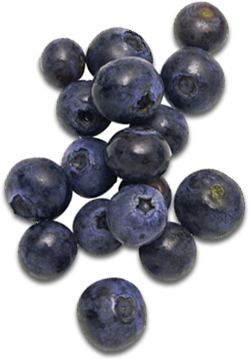no items to display
How Do Different Salad Greens Compare?
When it comes to salad greens, you’ve got plenty of options: kale, spinach, watercress, mesclun, iceberg, and more. If you’re wondering which is best, the answer is it depends!
Salad greens vary mightily in their nutritional profile and health benefits. But other factors may influence your choice on any given day, such as whether you’re eating them pre or post-workout, as well as what the season is. And since nothing kills your intentions to eat well like monotony, having a rotation of favorite salad greens is a better idea than always sticking to one type.
Power Up: Meet the Supergreens
Kale: Does 684% of the Daily Value (DV) for vitamin K, 206% for vitamin A, 134% for vitamin C, and 26% for manganese in a one-cup serving of a salad base sound too good to be true? Well, it’s what you get with kale. And if that’s not enough, kale is a crucifer, which means it contains powerful detoxifying compounds.
Unlike most greens, which are at their best in the spring and fall, kale stays in season all through the winter, which makes it a great choice for salads during the coldest months.
If the idea of raw kale sounds a little too chewy for you, then chop the kale very fine, massage it with lemon juice, and let it sit for a few minutes before eating it. This will break down the cellulose, making the kale easier to chew and digest. Just remember, high-fiber foods slow digestion, which is great for staying full after a meal, but not a good idea for a pre-workout snack, so save fibrous greens like kale for after Zumba.
Tuck away this recipe for kale salad with apples and cheddar for a refreshing meal this spring.
Spinach: Another highly nutritious choice for those who don’t care for raw kale is spinach. (I love kale, but not everyone does.) Spinach packs 181% of the DV for vitamin K and 56% for vitamin A (as beta carotene) into a one-cup serving. And with a quarter the fiber of kale, it will digest quickly, so you can snack on it before hitting the gym.
Plus, spinach is 92% water, so it’s also hydrating: another good reason to eat it before working out. Spinach pairs beautifully with strawberries in this salad.
Watercress: If someone asked you: “What’s the most nutritious member of the fruit and vegetable family?” What would you say?
According to researchers at William Paterson University in New Jersey, watercress is the clear winner, scoring a perfect 100 when assessed for its stores of 17 different nutrients, including fiber, potassium, protein, calcium, B vitamins, vitamin A (as beta carotene), and vitamin D. Like kale, watercress is also a crucifer, so it supports detoxification.
And if you like spicy greens, watercress is for you. Its peppery taste is offset by the creaminess of avocado in this salad.
Tip of the Iceberg (Lettuce)
Iceberg lettuce is often derided as having little nutritional value, partly due to its high water content (96%), and because it ranks lower than powerhouse greens like kale and spinach. However, one cup has 22% of the DV for vitamin K and one gram of fiber, so it’s better than not eating any vegetables at all! This is great news for those who have children who only really care for this leafy green.
Another benefit of iceberg lettuce is its high water content can be refreshing on a hot summer’s day and can keep you hydrated before exercising. (Iceberg has even less fiber than spinach, so it’s another good pre-workout green.)
Their leaves are sturdy and slightly curved, making them perfect for lettuce wraps. These rolls are vegetarian and gluten-free.
Mix It Up: Mesclun
Also known as spring mix, Mesclun is a mixture of the tender young leaves of a wide variety of greens. You can find it in the supermarket, but farmers’ markets also carry it in the spring.
Mesclun has many benefits. It’s a great way to experiment with different greens you might want to buy alone later. It’s hard to tire of, because it’s inherently varied. It’s more nutrient-dense than both iceberg and Romaine, and since the leaves are so small and are typically pre-washed, Mesclun takes no preparation what-so-ever (probably my favorite quality!).
This mesclun salad recipe lets the flavor of the greens speak for themselves with a simple lemon-Dijon mustard dressing.
What’s your favorite salad green? Share with us in the comments below!






